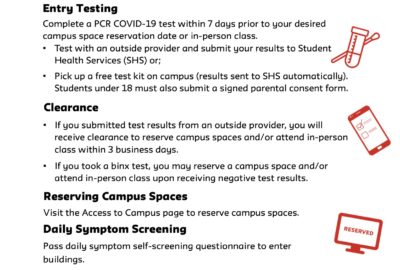
By Thomas P. DiNapoli
Thomas P. DiNapoli is the Comptroller of the State of New York. He is a 1988 graduate of the Milano School of Policy, Management, and Environment at The New School.
New York City is experiencing its largest and longest job expansion since the end of World War II. Not only is the city flourishing, it remains a beacon for immigrants from around the world seeking new beginnings and a better life.
A report I released in April in my capacity as New York State Comptroller showed that the city added 820,400 jobs between 2009 and 2018, more than every state in the nation outside of California, Texas and Florida, and, of course, New York. The current job expansion is also the fastest, with an average of 91,200 jobs added each of those years. The vast majority were private sector jobs.

Economic growth since the Great Recession ended helped New York City reach nearly 4.6 million jobs in 2018, about 19 percent higher than the pre-recession peak in 2008 and the previous peak in 1969, both 3.8 million jobs.
The jobs are also becoming more evenly spread out among the five boroughs with Queens, Brooklyn, Staten Island, and the Bronx contributing 48 percent of the job gains since the end of the recession, their largest share since at least 1975. In 2018, the outer boroughs accounted for 60 percent of citywide job gains. As a result of strong job growth in the outer boroughs, Manhattan’s share of private sector employment has declined, from 64 percent in 1990 to 59 percent in 2018.

New York has long been a magnet for immigrants seeking political and religious freedoms and economic opportunities. That remains true today more than ever.
In 2017 there were more than two million immigrants employed in the city, representing 42 percent of all workers. The unemployment rate for immigrants has also consistently been lower than the citywide unemployment rate. In 2017, the foreign-born unemployment rate was 3.2 percent, compared to 4.1 percent citywide.
New York City has also been the driving force behind employment gains in New York State. Job growth in the city has outpaced that in the state (and the nation) every year since the end of the recession. Although the city accounted for less than half of the jobs in the state in 2009, it has been responsible for more than two-thirds of the statewide job gains since then.
A look at the different industry sectors shows that the jobs picture is evolving.

Nearly one-quarter of the jobs added between 2009 and 2018 were located in the business services sector, which includes accountants, lawyers, programmers, and clerks. The sector grew by 193,000 jobs, or 34 percent, between 2009 and 2018 and accounted for nearly a quarter of all jobs added during this period.
Health care, the only employment sector to add jobs every year since 1990, added 145,500 jobs from 2009 to 2018. It was also responsible for the most job gains in any sector in 2018.
As New York City continues to be a tourist magnet, the leisure and hospitality sector added 153,500 jobs between 2009 and 2018, accounting for nearly one-fifth of all jobs added during this period. Leisure and hospitality added the second-highest number of jobs of any sector and grew the fastest (50 percent). Restaurants accounted for nearly two-thirds of the job gain (102,000 jobs added). Hotels and other lodging businesses added 11,700 jobs between 2009 and 2018.
The view of cranes and scaffolding across the city signals a robust construction industry as well. The sector grew 31 percent since 2009, adding 37,000 jobs. Construction was hit hard by the recession, but since 2012 growth has been robust, averaging five percent annually. In 2018, growth slowed to three percent, bringing sector employment to 157,800.
New York has long been known as a world capital for financial services. It suffered major job losses during the recession, but Wall Street has also come back strong.
The financial sector, including banking, insurance, securities, and real estate, added 41,800 jobs between 2009 and 2018. In 2017 financial sector employment finally recovered and surpassed the pre-recession level. However, employment in the securities industry, which totaled 181,300 in 2018, was still four percent smaller than the pre-recession level in 2008. In 2018, financial activities added 7,200 jobs, bringing sector employment to 474,700.
The information sector added 38,500 jobs between 2009 and 2018, an increase of 23 percent. Growth was driven by internet publishing, broadcasting, and web search portals, which added 30,700 jobs (nearly a threefold increase). Growth in the sector slowed in 2018 with the addition of 3,900 jobs, bringing sector employment to 204,400.
The technology sector cuts across many different employment sub-sectors. While there is no official definition, my office estimates that the sector has grown by 80 percent since 2009 to 142,600 jobs. With an average salary of $152,900 in 2017, the tech sector has become one of the economic drivers in New York City.
Still, my report did not find that all is rosy.
Though the high-paying business services sector added the most jobs during the current expansion, not all of the sub-sectors within business services have high salaries. For example, employment services was responsible for 30 percent of the jobs gained in the business services sector, but it had an average salary of $58,000, which was far below the citywide average ($89,800).
We estimate that employment sub-sectors with average salaries above the citywide average accounted for about 185,500, or 23 percent, of the job gains during the current expansion. That represents a considerably smaller share for high-paying sub-sectors than during the 2003-2008 expansion. In 2018, higher-paying jobs accounted for 12 percent of the jobs added, the smallest share of any year since 2009.
While job growth remains strong in New York City, there are national and global economic risks that could affect the pace of future growth.
You can read my full report at: https://www.osc.state.ny.us/osdc/rpt1-2020.pdf
Reposted from the Center for New York City Affairs Urban Matters
Photo By: chrisinphilly5448
Graphics By: New York State Comptroller’s Office.



